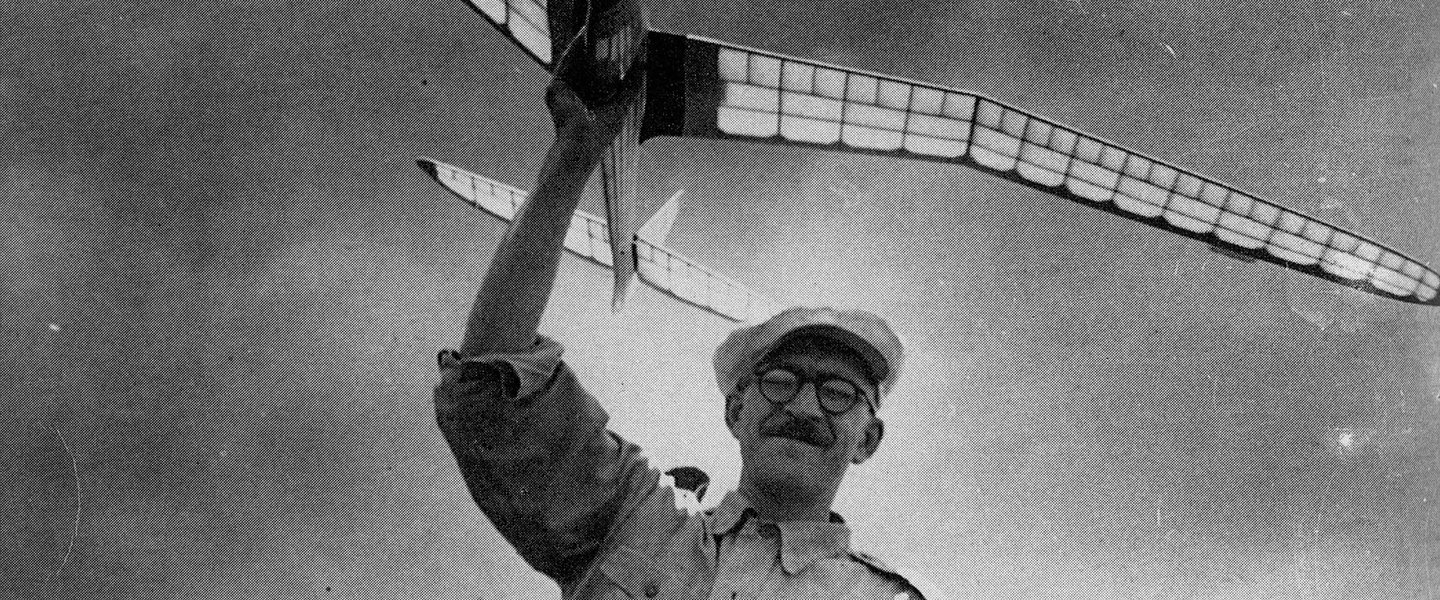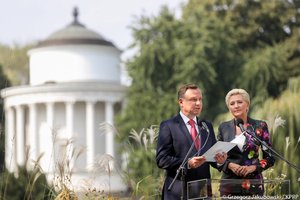The great Cosmopole
Reading of Andrzej Bobkowski's writings liberates from many complexes and stereotypical notions about life and duties towards the homeland – Prof. Maciej Nowak of the Catholic University of Lublin tells Poland.pl in an interview.
POLAND.PL: Fifty-[eight] years ago Andrzej Bobkowski – the Polish writer, essayist, economist, as well as a pioneer of skiing and model-making – died in Guatemala. This might sound like something from David Lynch’s Twin Peaks, but who was "Bob" really?
MACIEJ NOWAK: Let's start by saying that while his father, Henryk Bobkowski, and even his uncle, Aleksander Bobkowski, can be called pioneers of skiing in Poland, Andrzej also loved the sport. And it was something he did from his childhood almost until his death – he went on his last ski trip during medical examinations in the United States – he lived in Guatemala at the time – in April 1961, two months before his death. He drove from NYC to Newcombe in the Adirondack Mountains. He was engaged in model-making since junior high school, in the early days he had tried to build radio receivers, and much like his entire generation he was a great technical enthusiast. He studied economics in the mid-1930s at the Warsaw School of Economics, and later worked in Silesia at the Syndicate of Polish Iron Works. Let's add to this his passion for bicycles, which became widely known. In Szkice piórkiem (‘Sketches in Pen’) he describes his evacuation from Paris in June 1940 and his return cycling through the Côte d'Azur to the French capital in the autumn of that year. Although all this would be interesting material for a biographical sketch, it would not explain Bobkowski's place in Polish culture. In my opinion, Andrzej Bobkowski was first of all a great writer, and in a slightly more nuanced way - a writing man. His place in Polish culture owes primarily to the fact that his command of the pen was unrivalled, practicing primarily the genres, which can be found in the so-called belles-lettres: letters, journals, travel essays. After all, let's consider how we would know about his passion for sport and model-making, his peregrinations at the end of the world, that is Guatemala, his legacy of combining reflection with physical effort, if he himself did not write about it, and moreover in such an attractive way!? Today, when we have access to a few volumes of his letters, and the next ones are being prepared – including correspondence between Bobkowski and Kazimierz Wierzyński – it can be seen that he was the most eminent epistolographer of the Polish post-war emigration. Combining the sense of observation with cultural reflection in a brilliant and natural way, he was able to easily go from analysing the political situation to telling stories of his literary adventures, which he often connected to the realities of everyday life. The difference between Bobkowski and other figures of Polish culture whose lives are more well-known than their works - Norwid, Witkacy, Hłasko amongst them - is that in his case his life was the subject of his work. We know about the poor and proud Norwid dying in the House of St. Kazimierz in Paris from other accounts, as is the case with Witkacy's excesses and his suicidal death, and the same applies to Hłasko.
However, Bobkowski the cyclist, on the other hand, is an image that appears in Szkice piórkiem, written by Bobkowski himself. Bobkowski sailing across the Atlantic on the transatlantic ship "Jagiełło" is a character he described in reportage prose in Z dziennika podróży (‘The Travel Journal’). Bobkowski, the creator of airplane models, is the protagonist of his series Z notatek modelarza (‘Notes of a Model-Maker’). Added to this are hundreds of brilliant letters in which he describes himself on many occasions and in different periods of his life. So to answer the question posed above – Andrzej Bobkowski is an eminent Polish writer and intellectual with an original biography, the author of Szkice piórkiem, a series of other diaries, a series of short stories and many volumes of correspondence.
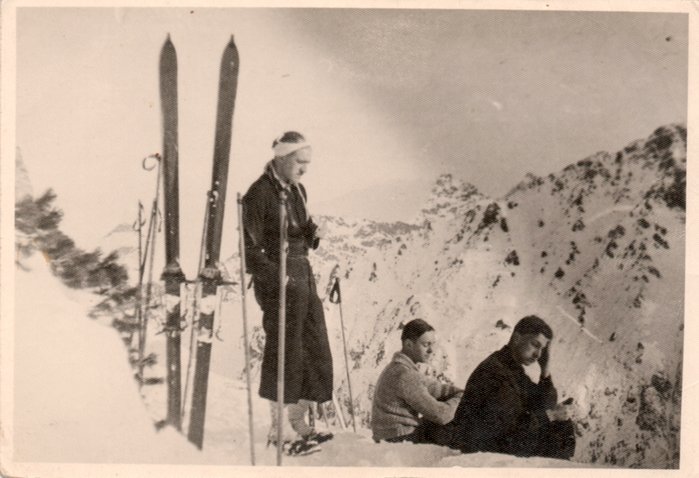 He started writing in college. How did his literary path develop? What were his writing and intellectual inspirations?
He started writing in college. How did his literary path develop? What were his writing and intellectual inspirations?
Half jokingly, it can be said that Andrzej Bobkowski began to write almost at birth. By this I mean that for him formulating various statements on paper came naturally to him while growing up. At a very young age he was forced to learn how to communicate with his parents by means of letter writing. His father, as a professional soldier – who rose to the rank of brigadier general - was transferred to various military units (Lida, Toruń, Modlin). Andrzej could not accompany his parents during each move and they wanted to provide him with a steady education in one place. As a result, he remained under the care of his aunt, Wanda Bobkowska, in Krakow, and he communicated with his parents through letters. The oldest known letter written by Andrzej is dated November 23, 1920, and in it he talks about going to the theatre to see “Uncle Juliusz”, Juliusz Osterwa, who was the husband of Andrzej’s aunt. A little later, young Andrzej begins to write into his journals, which he intermittently continues until the early 1930s. He continued to correspond abundantly; during his studies at the SGH he exchange about 900 letters with his future wife, Barbara. All this had a great impact on his choice of literary genres, for which he later became known as a writer.
In the press, he actually debuted during his university studies with a piece of short prose titled W parku frakowym (‘In the Tailor’s Park’) in the March 5, 1935 edition of the “Tempo Dnia” publication. The witty story imitates a journal entry written by none other than Bob himself. Later there was a long pause during which his epistolary and diary skills were perfected, but his literary plans were postponed. He returned to the idea of writing literature after his departure to Paris in the spring of 1939. But Bobkowski's serious debut took place only after the war, when he published fragments of his war diary from 1940-1944, and then of all kinds of prose, all with a distinctly autobiographical character. He co-operated with both emigre publications, London's "Wiadomosci", the Parisian "Kultura" (his Nekyia was already published in Rome, in the first issue of the magazine) as well as national ones: Krakow’s "Tworczosc" and "Tygodnik Powszechny", as well as "Nowiny Literackie" edited by Jaroslaw Iwaszkiewicz.
These publications included important texts by Bobkowski, including the widely discussed Farewell in "Kultura" and Lourdes, published in "Tygodnik Powszechny", which received much literary acclaim. Bobkowski became such a recognizable figure during this time that he received advances from Jerzy Borejsza, an influential cultural activist within the Communist regime and president of the state-owned publishing company "Czytelnik". But Bobkowski was firmly connected with the Instytut Literackie, and years later Jerzy Giedroyc would count him among his most important contributors. In 1948, the Bobkowski travelled to Guatemala and it was there that Z dziennika podróży was produced, as well as short essays written as columns: Na tyłach (‘On the Back’) and Pytania dzikich ludzi (‘Questions by Wild People’). In this period, after dealing with fundamental life problems, Bobkowski writes his most important stories, written as proper fictional prose: Coco de Oro, Punkt równowagi (‘Point of Equilibrium’), Spotkanie (‘Meeting’) and Spadek (‘Heritage’). His prose is filled with moral and religious issues, both from the inner life of his characters and in the context of the civilization changes that the West suffered as a result of the changes after World War II and the beginning of the Cold War. These texts prove that he was also a great prose writer. His designs in literature were Honore de Balzac and Gustav Flaubert, as well as Joseph Conrad and Graham Greene, and at the end of his life included Jack Kerouac and Tomasi di Lampedusa.
It is worth noting that after the war Bobkowski was more connected to American and Anglo-Saxon culture rather than French (European) culture, which in turn was characteristic of him between 1939-1948. He was fascinated by Kerouac’s On the Road, planned an essay based on this novel, he liked the aesthetic "ease" of this type of literary work, the American idea of mixing high and low culture registries, that had produced the western and many other genres of popular cinema, jazz and a specific type of press (such "Time" and "Life" magazines). At the end of his life he published in “Kultura” the only theatre play he ever wrote titled Czarny piasek (‘Black Sand’), which was interesting from the point of view of the problems and ideas it presented but unsuccessful as a stage work. All this time he held on to the idea of writing a contemporary novel of a generational character. He wanted to capture the sum of experience and ideas of the generation that survived two world wars and the collapse of civilization after the end of the second one. Unfortunately, his death made it impossible to accomplish this goal. There was only a sketch of the first part of the novel, titled Zmierzch (‘Twilight’), published posthumously by the writer's wife.
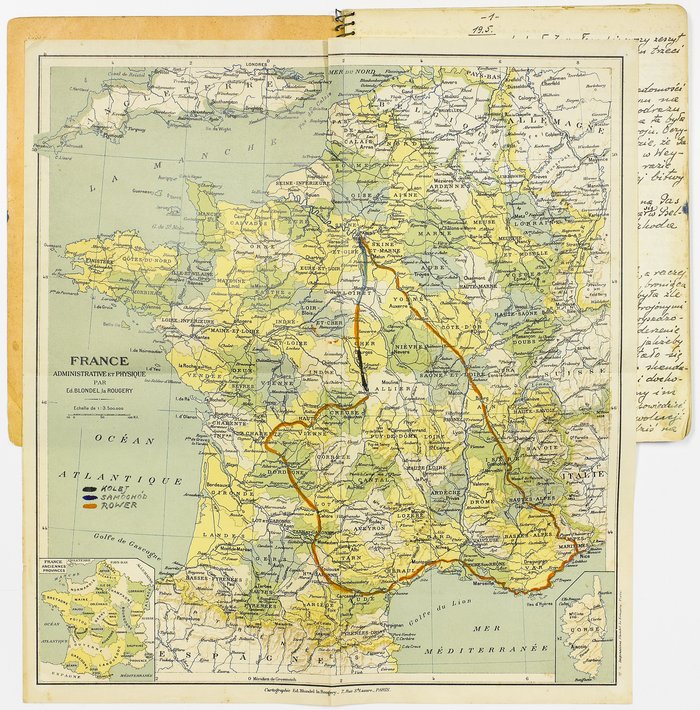 Bob's most important literary work is Szkice piórkiem, considered to be one of the most outstanding European dioceses of the 20th century.
Bob's most important literary work is Szkice piórkiem, considered to be one of the most outstanding European dioceses of the 20th century.
Indeed, so far I have not said anything about Szkice piórkiem. At the time of its publication, that is, in the late autumn of 1957, one would not have thought that it would be his most important book or that he would gain the status you have mentioned. Bobkowski was already a well-known and recognized writer at the time. By the autumn of 1957 he had published most of his literary texts. Szkice piórkiem in some way helped complement his work, and from the author's point of view, their editions were a realization of something that had been postponed for many years.
It is difficult to find analogies for them in Polish literature, primarily because of the personality of their author. The thing is, Bobkowski started writing the diary as an unknown author, so he did not have to take into consideration how the diary would be received by readers who would know him from other types of texts, such as novels and short stories. This gave him the freedom to express himself and the characters he mentions, and to explore the issues he addressed. On the other hand he was a well-educated man who read books and newspapers in several European languages, familiar with Europe from earlier journeys, and France, which he often stressed, also in terms of its administration, in which he had worked in. The magic of Szkice piórkiem, their continued lush charm and vitality comes from the combination of these qualities, but also from the great mastery of the language, in which the focus on rendering the values of the visible world perfectly blends with the personal perspective and the finest stylistic touches of the essayist. Bobkowski also uses the value of being "not from here" - he looks at the war in France as a Pole, as a stranger, as someone from the outside. This allowed him to look from a distance at a subject that he knows very well and which still fascinates him. - Can you find somewhere else a more ironic description of the last days of Paris and its liberation? But what is most important to me in Szkice piórkiem is the attitude of harmonious combination of various registers of experience, in which the faithfulness of accepted axiology, such as eating a good lunch, going to theatre or cinema, like riding a bike, putting together a home library with a literary work that is hard to come by and the care for gathering supplies for another winter during the occupation, and finally fun and prayer.
Szkice piórkiem are generally considered to be a journal, however discussions are ongoing regarding their authenticity, many of the published entries give the impression of being written ex post. You studied Mr. Bobkowski's manuscripts - what is your assessment of the intellectual honesty of Szkice piórkiem.
Let's start by saying that a book published in the second half of the 1950s contains notes made from May 1940 to August 1944, covering the entire period of occupation of France by the Germans. Over a dozen years passed before the written material was published!
Bobkowski had been working on authentic notes all the time - all the notebooks that made up Szkice piórkiem were retained - from the moment he sent some part of his diary to a war memoirs competition in London, immediately after the war, by preparing the text for Poland’s "Tworczosc”, where three of his extensive fragments were published, as well as the development of the entire work to be published in the country, which was to take place in 1949. Later, as we know from correspondence, he kept hold of the nine notebooks making up his diary.
Ultimately, the successful powers of persuasion by Jerzy Giedroyc, during Bob's visit to Paris in 1956, led in the following year to the publication of "those two bricks of mine," as he called his two-volume edition of the journal in the letters. Bobkowski had no intention of publishing the autobiographical notes he had made during the war. His intention was to publish a "book" rather than a "document," so the text was continually modified and improved. Both in terms of style and the views presented. I have in mind, for example, the opinion expressed about the war in manuscript of the journal: while Bobkowski never doubted the guilt of the Germans and was sincerely happy by its defeat, he hesitated in making a judgment on the United States and the USSR. He appreciated their participation in the war, but from the viewpoint of the European humanist he perceived the "primitivism" of both the United States and Russia, writing in this case the "satiated animal" (USA) and the "hungry animal" (USSR), with concern about the future of civilization from the perspective of an "Old" European. This perspective is also revealed in the differences in his assessment of popular culture, for example, in the original journals jazz music was treated as an example of degenerated American culture, while in Szkice piórkiem the “syncopes illucidated across the whole room by American swing” are welcomed by the author enthusiastically and associated with the values that began with jazz in the 1950s. The most radical transformation concerned the image of the author himself, authentic records show the evolution of his personality - there is no lack of records depicting internal struggles, fluctuations, reflections on the need for self-development. Szkice piórkiem are completely devoid of this kind of reflection, they bring the image of a man of his own right, of an already formed personality. On the other hand, I would like to say that it is not appropriate to append Bobkowski ex post assessments of the political situation and predictions of the development regarding the war situation. In the manuscript we find even more of these kinds of foreseeable predictions, as Bobkowski perhaps purged unreliable predictions from Szkice piórkiem.
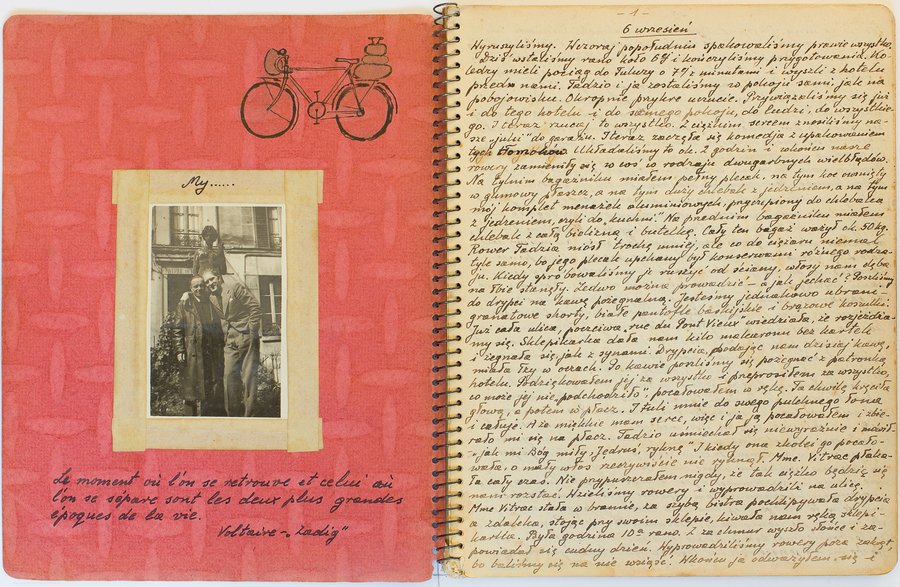 Szkice piórkiem are a record of Bobkowski's stay in France during the German occupation. What happened to him later?
Szkice piórkiem are a record of Bobkowski's stay in France during the German occupation. What happened to him later?
After the war ended in France, Bobkowski became involved in Polish émigré circles. Already in 1944 he re-activated the activities of the well-respected Polish Bookstore on Boulevard Saint Germain 123, which he ran until March 1945, and he cooperated with the Information Bureau of the 2nd Corps, headed by Józef Czapski. Through him he met Jerzy Giedroyc and became one of the editor's most important contributors. Social problems, the fear of the outbreak of World War III, the deep disappointment with Europe led Bobkowski to decide to leave the Old Continent and move to Guatemala in 1948. At first, Bobkowski, with great difficulty, develops his business - and finally opens his own Guatemala Hobby Shop. Consequently, his work focuses on popularizing aeronautical modelling. Bobkowski becomes a kind of guru and teacher for a large group of young Guatemalans, who will remember him as a wonderful teacher and friend long after his death.
During that time, he also reconnects with literature, publishing primarily in the Parisian "Kultura" and London’s "Wiadomosci". He took part in a number of expeditions to the United States and became an enthusiast of American civilization. He corresponded with many people, among others Jaroslaw Iwaszkiewicz, Teodor Parnicki, Mieczysław Grydzewski, Father Jozef Innocenta Maria Bochenski, Marek Hłasko. Of special importance among his correspondents are Jerzy Giedroyc and his mother, Stanisław Malinowski Bobkowska. In December 1957 Bobkowski is diagnosed with malignant skin cancer, the so-called melanoma. From this time his writings returned to the theme of struggling with a disease in which religious themes play an important role. He died in Guatemala on June 26, 1961.
Is Andrzej Bobkowski "the author of one book"? Hašek, Flaubert, Cervantes, Potocki – the history of literature knows many such cases ...
I think a couple of years ago one might have thought so. And although his most important book will remain Szkice piórkiem, in my opinion, with time the volumes of his correspondence will come first. Certainly the letters to Jerzy Giedroyc, Kazimierz Wierzyński and his mother combine the qualities of a high-class essayist, a hard-working and unobtrusive journalist with an intriguing observation of social nature and curiosity for the detail of customs. Which makes them attractive to readers.
He called himself a “Cosmopole" (Kosmopolak). What did this mean?
He jokingly wrote to Aniela Mieczysławska, a New York-based contributor to "Kultura", that this is "a brilliant definition of Andrzej Bobkowski, who will be applied in sociology", adding: "either way – we are already Cosmopoles.” This term appeared in print in his review of Jocelyn Baines’s biography Joseph Conrad. A Critical Biography, (McGraw-Hill, New York and Toronto, 1960), in his last text in "Kultura": Biografia wielkiego Kosmopolaka (‘The Biography of the Great Cosmopole’). In it he explained what he understood as cosmopolishness as a feature of Polish emigres who do not treat their Polishness as a burden or a constraint, do not succumb to the complex of Poland. They adhere perfectly to the culture of the country in which they decided to settle, without losing any connection with the best qualities of Polishness. In this review he noted that if Conrad had not been able to "free himself from Poland" before returning from Africa he would not have written Heart of Darkness but rather In Desert & Wilderness. Others “cosmopoles” mentioned by Bobkowski are: Kościuszko, Chopin, Modrzejewska. He also included himself in this group, even writing that he discovered the concept of cospolishness by analysing himself. This would make it a rather defined attitude, rather than a sociological notion.
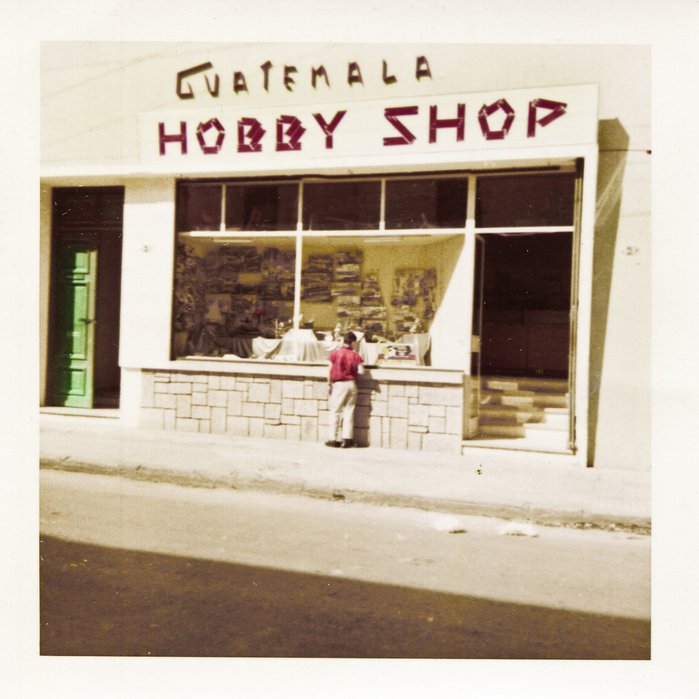 How have Bobkowski's books been received internationally? Was he translated into other languages? Was he also discussed?
How have Bobkowski's books been received internationally? Was he translated into other languages? Was he also discussed?
Already in 1991, Szkice piórkiem were translated in to French, illustrated with photographs and bearing a facsimile of various documents, with the necessary footnotes. Then in 2007 a translation into Ukrainian appeared. It seems that some fragments of Szkice piórkiem have also been translated into German. I know from private contacts that Szkice piórkiem are being translated into English. The widow of the writer, Barbara Bobkowska, helped facilitate the translation into Spanish of the play Czarny piasek. It was very important for her that Bob's friends in Guatemala get to know the text of the play that was set in Guatemala’s Pacific coast. Unfortunately, so far the translation remains as a manuscript. Personally, I only got some echoes of the Ukrainian feedback, which I heard from the Szkice piórkiem translator, Oles Hersym. After I published Notatnik 1947-1960 (‘Notes 1947-1960’), its review was published in the Ukrainian "Krytyka". I have not heard of the response to Bobkowski's writings in the French press, although I know of scholars from France and Switzerland who are interested in him and wrote about him. These were, I think, only publications in Polish.
What is Bob's place in literature today? Is he still a current writer, or can he - like many of his generation - already be the subject of specialized studies in the field of Polish studies or the history of ideas?
MN – Today, in many circles, Bobkowski seems to be one of the most respected Polish writers of the mid-20th century. For years, he has been studied by the most distinguished literary researchers but, as Andrew St. Kowalczyk pointed out, in the case of Bobkowski, recognition by researchers is complemented by the enthusiasm of ordinary readers. I recently came across a blog dedicated to Bobkowski, where a group of enthusiasts discussed Szkice piórkiem. I think that the changes that have taken place in our country in the political, social and economic sphere since 1989 have caused other interpretations of Bobkowski's prose than those of the earlier period. His journals and letters have become not only a source of information for many, but also a source of information about the kinds of experiences that are available to them today. Bobkowski's writings liberate from many complexes and stereotypical ideas about life, duties towards the homeland, relations between culture and material status, religion and active life. For example, I have heard from many people words of praise about the writer's last diary, which he wrote in the shadow of his impending death, boldly and even with a certain amount of humour coming out to meet it. Naturally, it is still worth popularizing him and bringing him closer to the widest audience possible.
Poland.pl
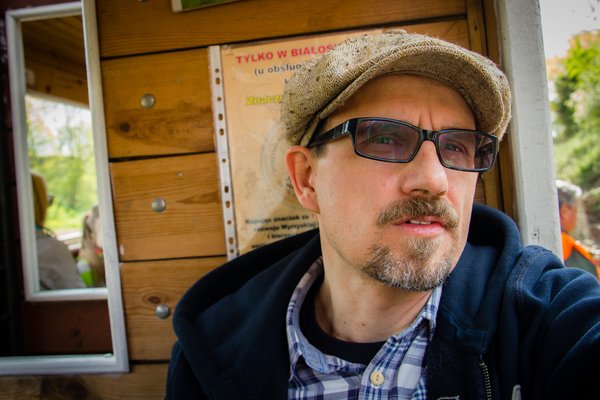
MACIEJ NOWAK, PhD
Lecturer in the KUL Religious Literature Research Centre, historian of literature. His scholarly interests focus on the relationship between literature and the Bible, historiosophical reflections in the novel, autobiographical elements in literature and modern chronicling. In this area, he studied the works of Gustaw Herling-Grudziński, Zbigniew Herbert, and recently Stanisław Brzozowski, Jan Lechoń and Stanisław Rembek.
He is the author of numerous studies devoted to the writing of Andrzej Bobkowski, including the monograph Na łuku elektrycznym. O pisaniu Andrzeja Bobkowskiego (‘On the Electric Arc. About the Writing of Andrzej Bobkowski', 2014). He published the manuscript of Bobkowski’s journal Notatnik 1947-1960 ('Notes 1947-1960', 2013). He is currently preparing the first biography of Andrzej Bobkowski.
He contributes to the quarterly "Ethos" (editorial board member), the Adam Mickiewicz Museum of Literature in Warsaw (Museum council member), Museum of Emigration in Gdynia, and the Cultural Center in Lublin.
He is also music critic, a big jazz enthusiast and expert, a regular contributor to the monthly "Jazz Forum".
26.06.2017
